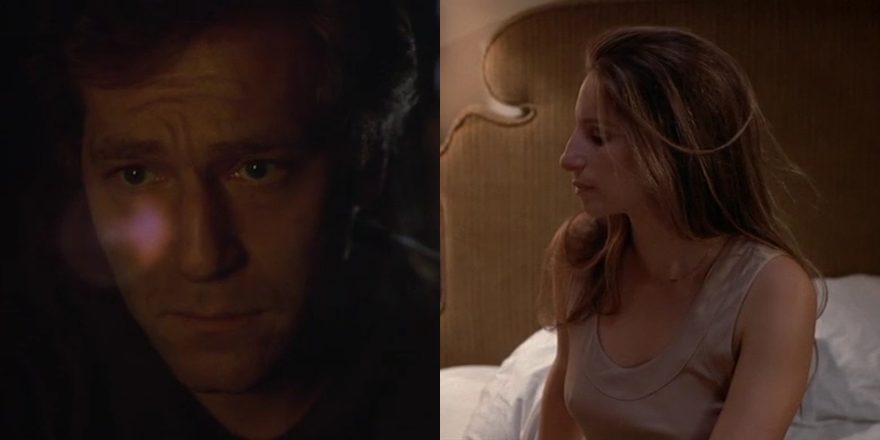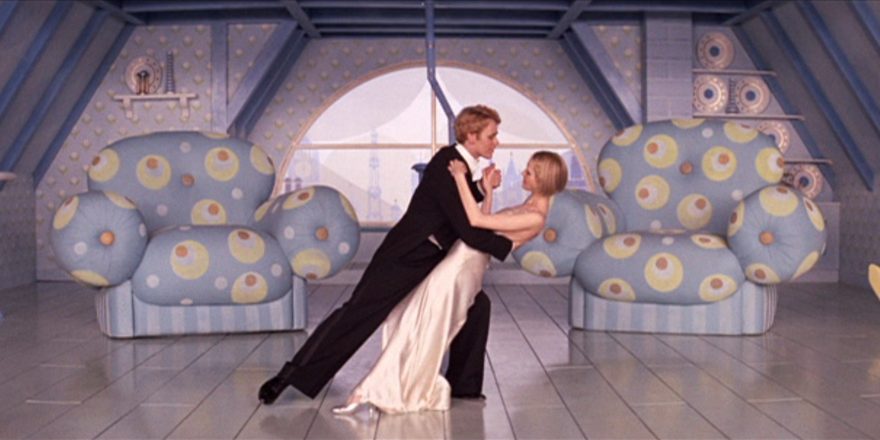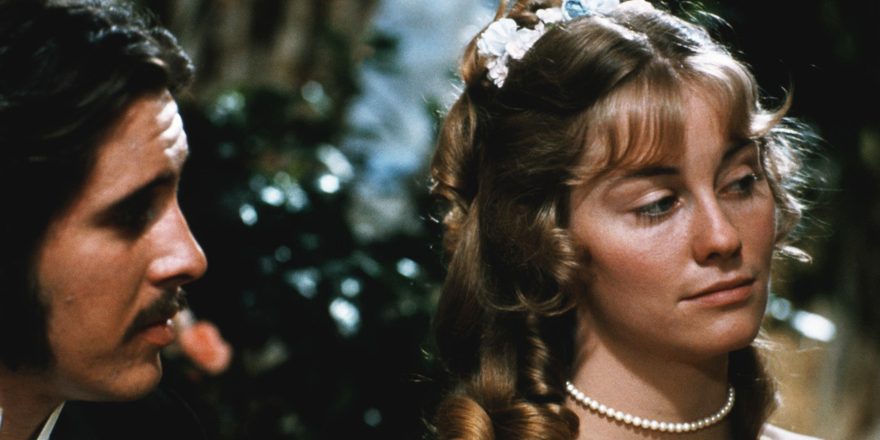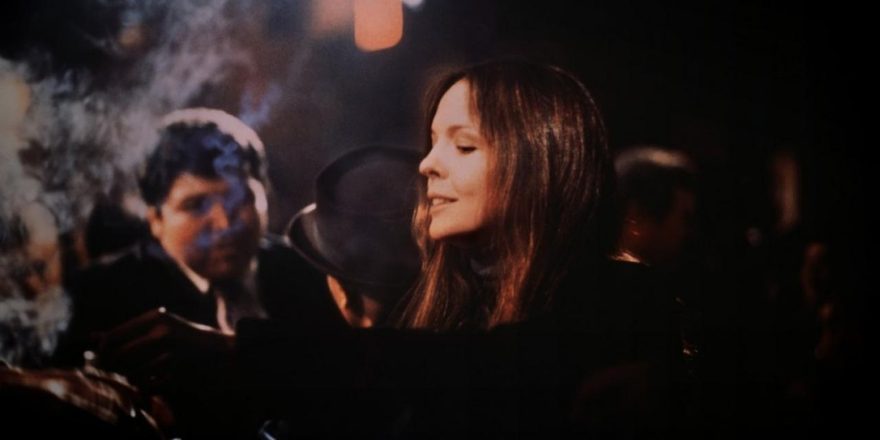Growing up in South Florida in the 1970s, and more specifically in the neighborhood of Hollywood Hills, was like living in a far-off suburb of New York City, though with palm trees and constant heat and humidity. The neighborhood adults of my memory – including my parents, my friends’ parents, and friends of my parents – were predominantly Jewish-American middle-class escapees from the North, some from Boston and Chicago, but mainly New York City. Prevalent accents were “New Yawk” heavy. On Sunday, the New York Times was delivered to everyone’s home; a thick weekly dispatch reminding them of what they had left behind. (For me, the Arts & Leisure section was a calling.)
I knew the insides of many homes belonging to this tribe, but it was those I didn’t know in the neighborhood that, as my creative curiosity took shape, I’d fantasize about, wondering about their secret lives behind the pale pastel-colored doors, high wooden fences and shaded windows. Some details would emerge over time, like the guy who was a self-proclaimed warlock, who when a pagan statue was stolen from his front lawn, threatened a curse on the thief if the statue was not returned. This made the front page of the local paper. Given my more melancholic and neurotic inclinations, I tended to imagine these phantom strangers in discontent and fear, isolated in their central-air-conditioned existence, longing to head back north to New York City, a place I loved even from brief impactful visits as a kid and a teen. To me, it was glorious; the city was the ultimate “other” even though it was, in the ’70s, perpetuated and punchlined on TV and in the movies as nothing but filth, crime and misery. (The ultimate popular yet execrable movie example of N.Y.C. panic: 1970’s The Out-of-Towners with Jack Lemmon and Sandy Dennis, directed by Arthur Hiller from a Neil Simon screenplay.)
I thought of this bit of my past when recently rewatching Irvin Kershner’s Loving (1970) and Up the Sandbox (1972), both unconventional and incisive films about marital and personal turmoil set in the New York City of the early 1970s. I didn’t see either on their first release (although it wasn’t uncommon for me back then to precociously make my way into R-rated adult-themed films!), yet to me they both feel like messages in a bottle. The people in these films inhabit the imagined complicated adult lives of my formative youth.
Loving is, on the surface, about Brooks Wilson (George Segal), a successful freelance advertising illustrator on the brink of professional and domestic obsolescence. He’s married, lives in a Connecticut suburb, has two young daughters; his life in Manhattan, a commuter train away, consists of clients, his agent, and a lover. (Desperately pitching for a high-profile campaign to an industrial mogul, played by Sterling Hayden, Segal’s character is told, “Frankly, I don’t like drawings. My daughter draws. Photographs, on the other hand, tell the whole story, and no mistakes.”)
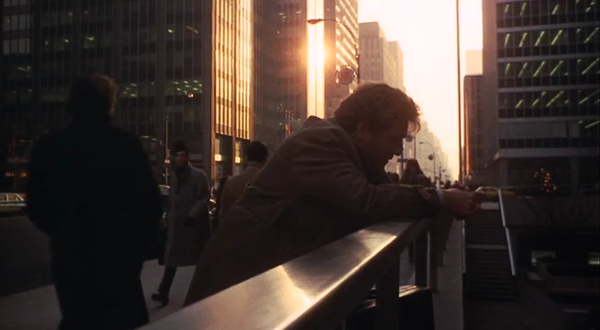
Kershner directs the film with precision and economy; at 89 minutes, it has the feel of a great novella with a curious and unexpected rhythm. The film’s power builds not so much on the cadence of dialogue, but keenly observed behavior.
There are Manhattan exterior scenes shot with a long lens where the actors, free from the proximity of a film crew, are thrust into the real-life immediacy and urgency of New York City streets.
Kershner came from a documentary background, and here, with the great D.P. Gordon Willis, they set up a visual tension between Brooks’ two worlds. While the camera may seem to respond to city life as liberation, it’s also a reflection of Brooks’ personal chaos and unraveling. Inversely, his Connecticut home life is shot mainly in a series of carefully composed still shots. (This was only Willis’ second feature film credit, and it’s thrilling to see his signature use of shadows, darkness, light and grain structure already so fully formed.)
Kershner and Willis construct several extraordinary sequences throughout Loving that unfold without (or nearly without) dialogue, but are crucial in their emotional resonance. Under the main credits, Brooks and an unknown woman play out a lovers’ quarrel – the chase, the tension, the tenderness, the lull, the détente, the abandonment – all in a series of compressed-time edits. In another sequence, Brooks gets ready for bed with his wife Selma (played by Eva Marie Saint), but first makes her pose for an illustration template photograph, him in a Yankee soldier’s hat, her hand carefully clasping the nape of his neck, her jaw angled so longingly right. Later, at his drafting table, Brooks contemplates the same image as he paints over it, creating a romance novel-like ideal Civil War saloon scene, a caricature of male-female archetypes.
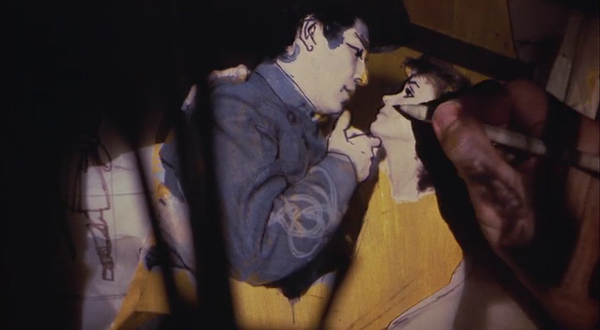
Loving is razor-sharp about the bruising and ridicule of the male ego, depicting the solid stud, once golden, whose talent as an artist and cocksman is now failing him, and the consequences on those around him of that decline. There’s no joy left in any of his efforts in both departments. And there’s no place for him in this changing world. (He could easily have been a character in Mad Men, picking up where that series left off.) Segal’s performance, I think his best, conveys these wounds, these struggles, without asking for sympathy. He’s a seductive sociopath. When he expresses hurt-boy charm, it’s still easy to fall for him (as the characters often do), even though he’s dangerously unlikeable.
The film’s revelatory performance is by Eva Marie Saint. Saint was indelibly introduced to moviegoers in 1954’s On the Waterfront, and went on to star in Hollywood films including North by Northwest. It’s exciting to see her in such a contemporary role, freed from Hollywood gloss. Her resonant cool is the anchor of this tale of male decay; she’s the smarter one. Kershner astutely avoids hackneyed domestic melodrama and, aided by Saint, avoids the cliché of the put-upon wife and a slowly unraveling marriage. There’s a devastating scene when she and Brooks go to see a potential new house to buy; the woman selling the house reveals she’s getting rid of it after a divorce. The unexpected pain, and truth, of this moment cripples Selma to apologetic tears, and for a moment, brings the film’s one genuinely tender and empathetic moment between her and Brooks.
The film’s bravura last half-hour is set at a large upscale Connecticut house party with humiliating revelations and keen social observations about the turning tide of sexual liberation, along with some prescient use of technology and how it plays into our voyeuristic nature. (I have to think this section, if not the whole film, was a strong influence on Ang Lee’s 1997 film The Ice Storm, set in 1973 Connecticut.)
The climax, a knockabout fight between Brooks and Selma that spills into the frigid winter night, is played against parked-car headlights, mounds of glistening snow and ice-frosted windshields. What once seemed to be his story, becomes hers. And, I think, was hers all along. Kershner leaves it right there, swinging, in the cold harsh air.
Kershner and Willis reunited in 1972 for Up the Sandbox, starring Barbra Streisand and David Selby. Again set in New York City, this film is more specifically focused on the 1970s contemporary female experience. Its structure is looser and more ambitiously overreaching than Loving, and though it wanders to a casual conclusion, its cumulative messiness is no less potent.
Streisand plays Margaret, the wife of a lauded Columbia University professor (David Selby) and mother to two young children. They live a comfortable middle-class life on the Upper West Side of Manhattan. Margaret actually loves her husband; that isn’t a question. This isn’t a time-bomb marriage like Brooks and Selma’s. But that doesn’t diminish Margaret’s internal conflict. She proudly claims her identity of mother and wife (in that order), but needs to be acknowledged for her identity, her choices and her unfulfilled talent as an intellect and writer.
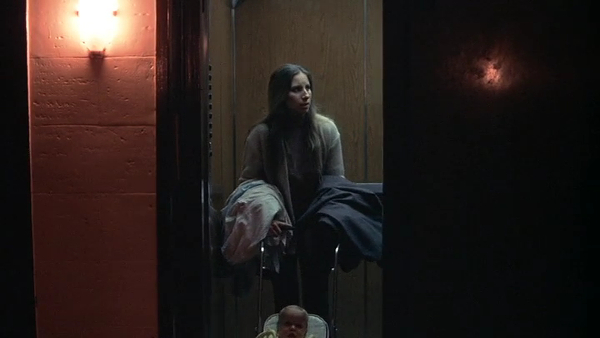
When learning she’s pregnant, something she keeps to herself, she contemplates not only the possibility of an abortion, but also the frustrations, jealousies and regrets of her life that become catalyst for a series of fantasies. These set pieces don’t all work, such as the broad staging of a “liberation army” blowing up the Statue of Liberty, and another in which Margaret cavorts with Fidel Castro, leading to a surprising revelation that builds uneasily into gay panic.
But even when these (occasionally) threaten to derail the film, Kershner and Willis, along with editor Robert Lawrence, do extraordinary and subtle work moving in and out of Margaret’s fantasy life, pulling back to reality at just the right moment. Often, there’s no obvious visual cue when the shift happens; it’s only subtle details or behavioral nuances that become separated from reality, and at times, it takes a bit to sink in. (Streisand and Kershner both convey in later interviews and DVD audio commentary how confused audiences were at the time. The film was a box-office failure.) When these sequences work, they’re thrilling, especially the one in which Margaret’s parents have an anniversary party at their New Jersey suburban home. Her domineering mother (played by the great Jane Hoffman) pressures her to move away from the city: “Margaret, you don’t understand. I simply refuse to let you go on raising your children in that disgusting city surrounded by underprivileged Spanish-speaking persons and colored people.” Kershner and Willis alternate here between the perspective of a home-movie camera, shifting between the “real” 35mm and Super 8mm ratio, and using harsh “amateur” lighting. The sequence has the most fervent comic energy of any in the film, but still with a sting.
As in Loving, the director and cinematographer bring immediacy to the film; a gorgeous nighttime post-party street argument staged in a wide traveling two-shot (a signature refined and mastered later by Willis in his work with Woody Allen); Margaret’s playground klatch with fellow mothers. The film’s loveliest moments are quietly observant and intimate; Margaret bathing her infant; her writing alone in the kitchen on a late rainy night, and then capturing a kitchen roach under a glass; or after her clinic visit, looking at the hand-drawn note scrawled in lipstick “AT THE PARK Pxxx” on the glass panes of the living room French; or a simple stroll from her Upper West Side building onto the street, stroller and child in tow (again, the long lens).
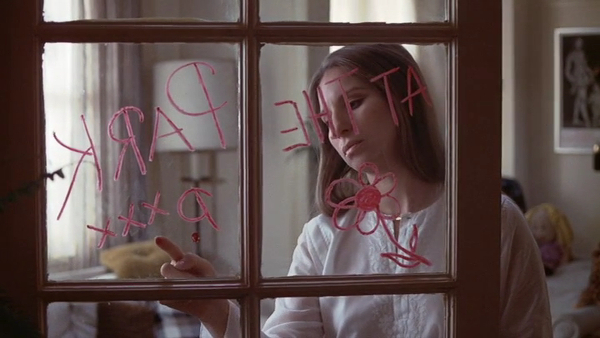
In Sandbox, Streisand is like a Manhattan Monica Vitti, with her ripe sensual mouth, aquiline nose, tousled hair and longing observant eyes, with a sense of something unexpected lurking beneath. As Margaret, nothing gets past her; she is wicked sharp, even when lost in her imagination. She, born of Brooklyn, New York, is a magnificent “other.”
It’s a luminous portrayal, especially in those unguarded moments. And she has an easy, familiar chemistry with Selby. They have a playful bedroom scene together that’s sexy for its domestic ordinariness. (Kershner talks about how the studio wanted to cast a star as the male co-lead, but he argued that it would make the task of scaling down Streisand’s star magnetism impossible.)
The surprise, certainly in the overall context of her career, is how naturalistic and relaxed her performance is. Letting go of Streisand “movie star,” freed from concern of left vs. right camera angles, she liberates herself. As an actress, she commands the frame without controlling it.
In a 1977 Playboy interview, Streisand talked about the disappointing box-office failure of Up the Sandbox: “I don’t think people wanted to see me play a housewife who wasn’t funny. It was very discouraging.” (What’s Up, Doc?, a major hit, was released nine months before Sandbox.) She went on to make the distinction between social realism on film and “fantasy,” which she described as what happens when people kiss, and violins swell on cue, and audiences cry. When asked if she wanted to do more social realism, she answered, “not to the exclusion of fantasy films. There’s room for both.”
She followed Sandbox with The Way We Were (1973) – an indestructible myth-boosting swoon of a film – and would never be as earthbound and contemporary on screen again as she is here in a social realistic film about a woman who, ironically, escapes into fantasy to make sense of her own identity. Irvin Kershner would go on to do such notable films as Eyes of Laura Mars (1978) – offered to Streisand, but turned down, and The Empire Strikes Back (1980). Gordon Willis’ camera defined many of the greatest films of the ’70s and ’80s.
When I think back, picturing the past and imagining the future, I swear it has grain structure, and shadows and darkness and light. I live in New York City. And I still wonder about people in houses.



